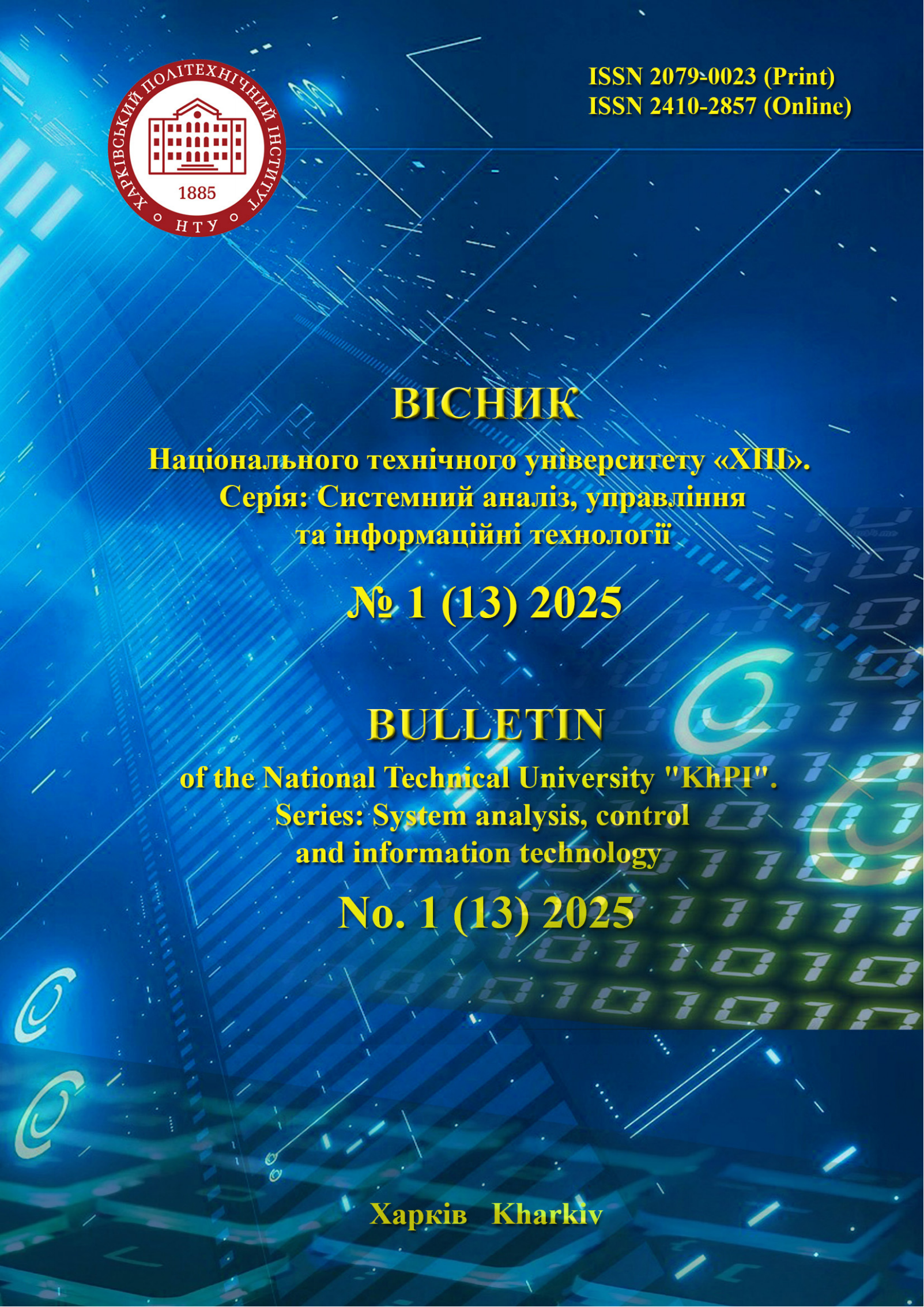INTEGRATED GRAPH-BASED TESTING PIPELINE FOR MODERN SINGLE-PAGE APPLICATIONS
DOI:
https://doi.org/10.20998/2079-0023.2025.01.08Keywords:
single-page applications, testing, automated testing, Pareto analysis, test coverage, React, Cypress, PlaywrightAbstract
In the modern software development ecosystem, Single-Page Applications (SPAs) have become the de facto standard for delivering rich, interactive user experiences. Frameworks such as React, Vue, and Angular enable developers to build highly responsive interfaces; however, they also introduce intricate client-side state management and complex routing logic. As applications grow in size and complexity, manually writing and maintaining end-to-end tests for every possible user journey becomes infeasible. Moreover, ensuring comprehensive coverage − across functionality, security, performance, and usability − requires an integrated and adaptive testing strategy that can scale with rapid release cadences.
This paper introduces a novel, integrated testing pipeline that augments conventional unit, component, integration, API, performance, security, and accessibility testing with a formal Graph-Based Testing (GBT) model. We model the SPA as a directed graph, where each vertex represents a distinct UI state or view, and each directed edge corresponds to a user-triggered transition (e.g., clicks, form submissions, navigation events). Leveraging graph algorithms, our approach automatically identifies missing paths to achieve exhaustive node, edge, and simple path coverage up to a configurable length, synthesizes minimal test sequences, and generates executable test scripts in frameworks such as Jest (unit / component), Cypress or Playwright (integration / E2E), and Postman (API).
To select and tune the appropriate tools for each testing facet, we employ a multi-criteria decision framework based on linear additive utility and Pareto analysis. Each tool is evaluated across five normalized dimensions − defect detection accuracy, execution speed, licensing or infrastructure cost, adoption effort, and scalability − weighted according to project priorities.
Finally, we integrate this GBT-driven test generation and tool orchestration into a CI / CD pipeline, enriched with pre-production security scans via OWASP ZAP and periodic load tests with JMeter. The result is a continuous, self-healing suite of tests that adapts to UI changes, automatically refactors itself against graph-differencing alerts, and maintains high confidence levels even under aggressive sprint schedules. Empirical evaluation on two large-scale SPAs demonstrates a 40 % reduction in manual test authoring effort and a 25 % increase in overall coverage metrics compared to traditional approaches.
References
Beizer B. Software Testing Techniques. 2nd ed. New Delhi: Dreamtech Press, 2003. 550 p.
Zhu M. On Graph-Based Testing. Proceedings of the International Conference on Software Engineering, 1997, pp. 120–127.
Goyal P., Ferrara E. Graph embedding techniques, applications, and performance: A survey. Knowledge-Based Systems. 2018, vol. 151, pp. 78–94.
Tamassia R. Handbook of Graph Drawing and Visualization. Boca Raton: CRC Press, 2013. 844 p.
Cypress.io. Available at: https://docs.cypress.io (accessed 30.04.2025).
Playwright. Microsoft. Available at: https://playwright.dev (accessed 30.04.2025).
Jest – Delightful JavaScript Testing. Available at: https://jestjs.io (accessed 30.04.2025).
H. Joshi. Analysis of web assembly technology in cloud and backend. International Research Journal of Modernization in Engineering Technology and Science. 2022, vol. 4, no. 9, pp. 121–128.
Postman. Available at: https://www.postman.com (accessed 30.04.2025).
OWASP ZAP – The World’s Most Popular Free Security Tool. Available at: https://www.zaproxy.org (accessed 30.04.2025)..
Apache Software Foundation. Available at: https://jmeter.apache.org (accessed 30.04.2025).
Hamdan M. H. Continuous Integration and Testing. Birmingham: Packt, 2022. 330 p.
Downloads
Published
How to Cite
Issue
Section
License

This work is licensed under a Creative Commons Attribution 4.0 International License.
Authors who publish with this journal agree to the following terms:
- Authors retain copyright and grant the journal right of first publication with the work simultaneously licensed under a Creative Commons Attribution License that allows others to share the work with an acknowledgement of the work's authorship and initial publication in this journal.
- Authors are able to enter into separate, additional contractual arrangements for the non-exclusive distribution of the journal's published version of the work (e.g., post it to an institutional repository or publish it in a book), with an acknowledgement of its initial publication in this journal.
- Authors are permitted and encouraged to post their work online (e.g., in institutional repositories or on their website) prior to and during the submission process, as it can lead to productive exchanges, as well as earlier and greater citation of published work (See The Effect of Open Access).


